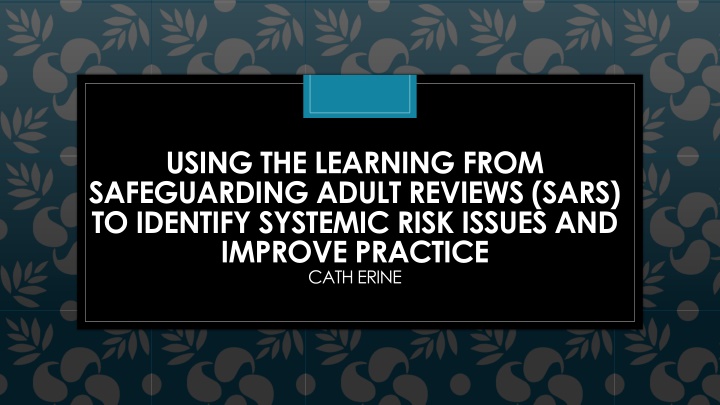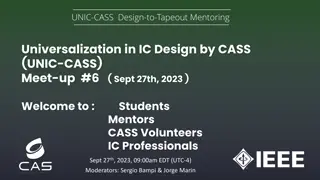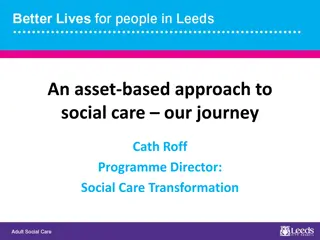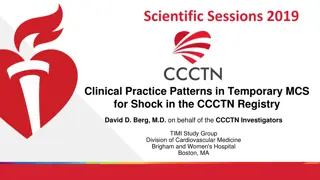
Safeguarding Adult Reviews: Systemic Risk Identification and Practice Improvement
Learn to utilize findings from Safeguarding Adult Reviews (SARs) to identify systemic risk issues, involve frontline professionals, develop action plans, and enhance practice. Explore benefits, challenges, and strategies for structuring SARs effectively.
Download Presentation

Please find below an Image/Link to download the presentation.
The content on the website is provided AS IS for your information and personal use only. It may not be sold, licensed, or shared on other websites without obtaining consent from the author. If you encounter any issues during the download, it is possible that the publisher has removed the file from their server.
You are allowed to download the files provided on this website for personal or commercial use, subject to the condition that they are used lawfully. All files are the property of their respective owners.
The content on the website is provided AS IS for your information and personal use only. It may not be sold, licensed, or shared on other websites without obtaining consent from the author.
E N D
Presentation Transcript
USING THE LEARNING FROM SAFEGUARDING ADULT REVIEWS (SARS) TO IDENTIFY SYSTEMIC RISK ISSUES AND IMPROVE PRACTICE CATH ERINE
Learning Outcomes facilitating frontline professional involvement in the SAR to enable change identifying the learning and developing proportionate action plans effective action planning the challenge of publication and overlapping reviews effective communication of the lessons from safeguarding adults reviews
Benefits and challenges of involving front line practitioners Benefits Heard and recognized Informs practice Empowers reflection Builds confidence to constructively challenge other professionals and customers Creates trust amongst team and managers Challenges Feeling vulnerable/exposed Disempowered Isolated from colleagues and family Loss of confidence in ability to work with customers Increased risk of leaving the job
Structuring a SAR/Lessons learnt to maximize the benefits Pre - SAR Increasing the knowledge of SARs and their purpose Building in reflective practice on both a single and multi-agency basis Holding learning from SARs events on a regular basis Commissioning a SAR Consider involvement of relevant services in the SAR decision Consider involvement of services in the construction of the TOR Identify areas may overlap with disciplinary or other statutory enquiry and consider how these can be mitigated Offer support to workers and managers
Structuring a SAR/Lessons learnt to maximize the benefits During the SAR Provide regular updates to workers/managers supporting shared ownership of the learning in real time Explore impact on policies and structures, engage senior managers in conversations about these Identify support needs and meet them Engage all relevant organizations in creating the action plans and timescales
So What. Recurrence of themes and issues identified from SAR s - why? Can SARs impact on adults and workers/organizations? Can SAR s safeguard adults and reduce the risk of further deaths IF not - why Structural or practice changes needed New or re-prioritized funding streams Lack of commitment to embed learning Inability to cascade and obtain clear ownership for actions Eligibility thresholds
Local example Repeated deaths linked to self neglect and hoarding Policy development and sign off with linked training had limited impact Culture change around ownership required shared ownership Customer centered responses Management oversight closure form, supervision item, clear escalation process Reflective sessions
Publication Factors impacting Family involved/family sensitivity Criminal or other enquiries ( coroner, disciplinary, regulatory) Reputational damage Failure to learn from previous SARs Adult still living Risk to other adults - confidentiality
Communicating learning? Full report/executive summary Short guides 7 minute briefings with a focus on practice Newsletters Board/Sub group ownership of learning Learning from SAR s briefings/training Discussion in supervision and team meetings Changes to recording systems to embed learning Audits to test traction Other?






















